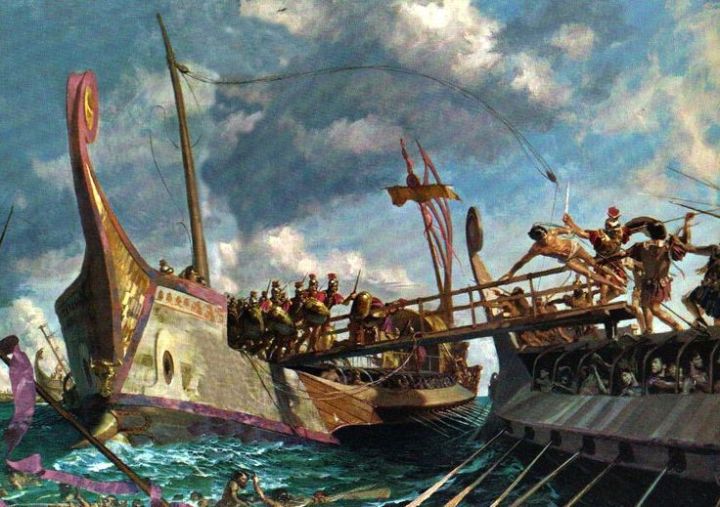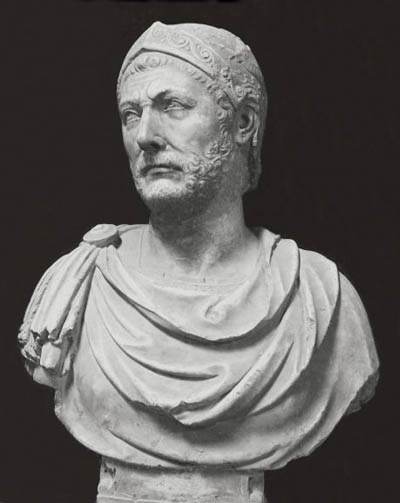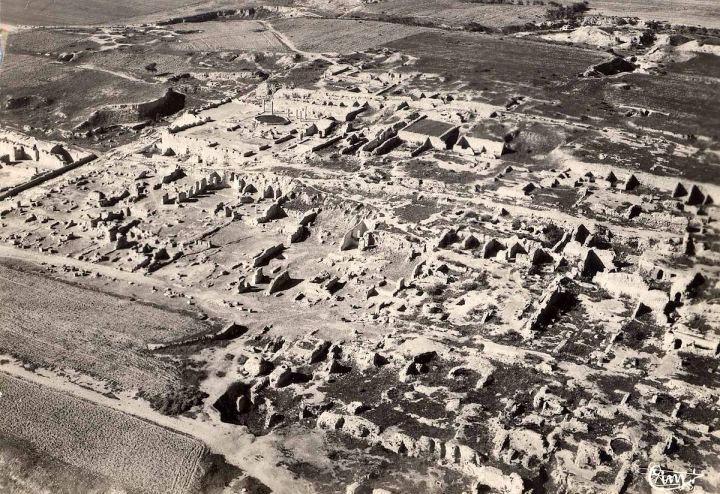This post will talk briefly of the Punic Wars. Rome and Carthage fought three bloody wars, and it was the first time Rome fought a large and able foe with the ability to finance large armies. Rome also acquired and maintained territory outside of Italy. This was the start of the Roman dominance that would last for centuries.
Rome had established itself as the regional power on the main Italian peninsula during the 3rd century BCE. Carthage was a major maritime power. It evolved as a Phoenician colony to have a large network of trade and commerce across the Mediterranean.
Carthage was no stranger to the Greco-Roman world. They had been in conflict with the Greeks for centuries, especially in Sicily. At the start of the first Punic War, Carthage controlled trade in most of the Western Mediterranean and had a sizeable holding in the Iberia, Sicily and Northern Africa.
First Punic War
The First Punic War, lasted 23 years from 264BCE-241BCE. A conflict between Hiero II of Syracuse and Mamertines of Messina got Rome and Carthage into direct conflict. The Mamertines initially approached Carthage for help, but rejected it and took on Roman aid. In retaliation, Carthage then supported Syracuse. The initial land battles showed Carthage that the Romans had the edge on land battles. Limiting their land forces, they focused on using Naval Strength. With Sicily becoming a stalemate, Rome expanded its naval arm. Initial battles proved their inefficiency. In a bid to even the odds, the Romans invented the Corvus. It was a boarding tool that allowed the Roman navy to board enemy vessels instead of focusing on the conventional ramming tactic. Rome would see a string of victories on land and sea. Most impressive results for Rome were the naval battles of Mylae and Cape Ecnomus. Rome did suffer one land defeat, but it was not going to affect the outcome of the war. In the end, Rome lost more ships to storms than to Carthage. It lost whole fleets to storms, showing its willingness to defeat the opposition no matter the cost. While the peace treaty was harsh, Rome still let Carthage keep most of its empire.

The Second Punic War
The Second Punic War was another deadly conflict lasting from 218BCE to 201BCE. Carthage having recovered from the previous conflict conquered Iberia to gain wealth. Hannibal, whose father fought the Romans had a vendetta against them. He made an overland crossing of the Alps with his elephants (which died in the passes) and surprised the Roman forces in Italy. A string of victories including Cannae saw him gain a host of Italian allies and convinced Phillip V of Macedon commence his war on the Aetolian League and Rome. However, Hannibal was not able to bring Rome down as the city was well defended and it had raised new armies. Hannibal was denied support from Carthage, which focused more on regaining Sicily than helping its General. Rome which was reeling from Cannae had lost half of its Italian Allies and had lost a whole lot of manpower. For the first (but not last) time, Rome bent its rules. Non-Landowners were recruited into the legions. Scipio at the age of 25 was made the commander of the Iberian armies and successfully removed Carthage from the peninsula. Rome’s navy was more powerful than Carthage’s during this war. On the Italian mainland, more able commanders took the lead for Rome. While not able to secure outright victory, they could fight for stalemates and win the war of attrition against Hannibal. Scipio after routing the Carthaginian forces in Iberia, was made the governor of Sicily after his consulship. Landing in Africa, he forced Hannibal to return to defend Carthage. Scipio defeated him at Zama and the peace treaty forever crippled Carthage and made it dependent on Rome. Rome on the other hand firmly established itself as an international power, with foreign holdings. This was the start of Rome maintaining its legions and power outside of Italy.

The Third Punic War
The Third Punic War was more of a siege and was much shorter than the other two wars. It lasted from 149BCE-147BCE. Carthage had started to recover its economic prowess and repaid its obligations to Rome. When Carthage raised an army to repulse a Numidian attack, it did so without Rome. The defection of Utica (the eventful capital of Roman Africa) to Rome saw the Romans declare war. Afraid that Carthage could rise once again, it launched an invasion and prolonged siege. In the end, a descendant of Scipio Africanus captured the city. With the population enslaved, the Carthaginian civilization came to an end. The city was burned. It would later be founded a century later, as a Roman city by Julius Caesar and would become an important breadbasket for the Roman Empire.
The Punic Wars were important for Rome, as it learnt to maintain and administrate a foreign empire, while at the same time facing off against an enemy that had the means to fight a prolonged war.

To sum up in the words of Cato the Elder, Ceterum censeo Carthaginem esse delendam (Furthermore, I consider that Carthage must be destroyed).
-Gaurav


